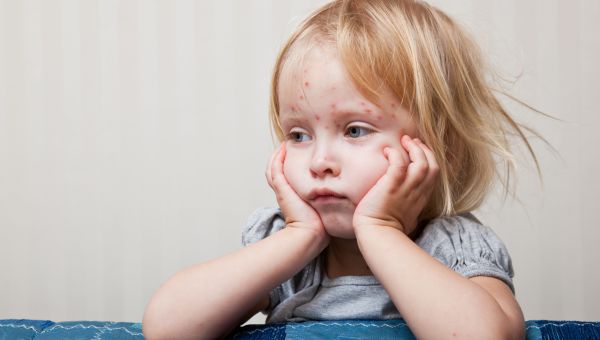5 important facts about measles
Get the truth about the disease that’s been making a worrisome comeback.
Updated on September 10, 2024

For years, people in the United States didn't have to think about measles very much. That's because a safe and effective vaccine to protect against this viral infection has been available for decades. But measles has come back in recent years as a potential threat.
In 2000, the U.S. declared measles to be eliminated. But as of September 5, 2024, a total of 247 measles cases were reported in the District of Columbia and 29 states: Arizona, California, Florida, Georgia, Idaho, Illinois, Indiana, Louisiana, Maryland, Massachusetts, Michigan, Minnesota, Missouri, New Hampshire, New Jersey, New Mexico, New York City, New York State, Ohio, Oklahoma, Oregon, Pennsylvania, South Dakota, Vermont, Virginia, Washington, Wisconsin, and West Virginia, the U.S. Centers for Disease Control and Prevention (CDC) reports. Of these cases, most involve children younger than 5. And 87 percent of those infected were either unvaccinated or their vaccination status was unknown.
Seven months into the year, there are more new cases than the past three years combined: 2023 (58 cases), 2021 (49 cases), and 2020 (13 cases).
Learn more about measles and what you can do to protect yourself and your community.

Early symptoms are flu-like
Measles symptoms can first mimic those of a bad cold or a nasty flu. The signs come in stages, starting off with a high fever, runny nose, watery eyes, cough, and sore throat. Tiny white spots may also pop up inside the mouth within two to three days. Three to five days after symptoms first appear, a non-itchy red rash forms at the hairline and can spread all over the body.

It is very contagious
An infected person can pass the virus through the air, usually by coughing or sneezing. The virus can stay in the air or on contaminated surfaces for up to two hours. If you breathe that air or touch an affected surface and then touch your nose or mouth, you risk becoming infected, even long after the infected person has left the area.

There is no specific treatment for measles
With plenty of rest and hydration, measles symptoms should subside within a week or two. Your healthcare provider (HCP) may suggest ways to ease symptoms, such as using a humidifier for a cough or taking ibuprofen for a fever. If your child is infected, keep them away from other children to avoid spreading the disease. Contact an HCP if symptoms don’t improve or seem to worsen. Watch for symptoms such as ear pain, pulling at the ear, and sleep troubles, since about 1 in 10 children with measles also develop ear infections. Shortness of breath, chest pain, or a cough with sputum may be signs of pneumonia.

Adults can get measles, too
While measles is most commonly known for affecting kids, unvaccinated adults or those with low immunity or a weakened immune system are susceptible, too. Complications for adults can be severe, especially for people over age 20, people with compromised immune systems, and pregnant people. In pregnancy cases, the disease may contribute to higher chances of early labor, miscarriage, and low birth weight.

Measles can be prevented
Measles is a one-time disease. In other words, if you’ve already had it, you won’t contract it again. But for those people who haven’t previously had the infection, vaccination against measles is the best way to protect againt the infection. All children should receive two rounds of the measles, mumps, and rubella (MMR) vaccine by age 6. Adults who aren’t immune should get at least one round of the shot. The more people who are vaccinated, the less likely the infection will spread.

Centers for Disease Control and Prevention. Measles (Rubeola): Measles Cases and Outbreaks. Page last reviewed October 3, 2022.
Centers for Disease Control and Prevention. Measles (Rubeola): Measles History. Page last reviewed November 5, 2020.
Centers for Disease Control and Prevention. Measles (Rubeola): Measles Elimination. Page last reviewed November 5, 2020.
Centers for Disease Control and Prevention. Measles (Rubeola): Measles Signs & Symptoms. Page last reviewed November 5, 2020.
Centers for Disease Control and Prevention. Measles (Rubeola): Transmission of Measles. Page last reviewed November 5, 2020.
Centers for Disease Control and Prevention. Measles (Rubeola): Complications of Measles. Page last reviewed November 5, 2020.
World Health Organization. Measles. December 5, 2019.
Mayo Clinic. Measles. May 11, 2022.
KidsHealth.org. Measles. September 2019.
March of Dimes. Rubella and Pregnancy. Last reviewed August 2021.
Centers for Disease Control and Prevention. Measles (Rubeola): Top 4 Things Parents Need to Know about Measles. Page last reviewed November 5, 2020.
NYC Health. Measles Frequently Asked Questions. Revised August 2019.
More On


video

article

slideshow


video


video
